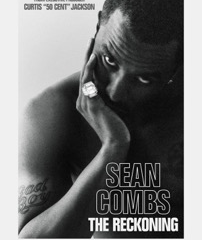Related: Famous Fathers Who Had Kids Late in Life
Advertisement
Rodin Eckenroth/Getty Images
David Foster’s daughter Amy Foster is defending her father against claims he deserted his older children for 2-year-old son Rennie.
After David, 74, took to social media on Friday, January 5, to share a video of his toddler performing on the drums, a few Instagram trolls used the opportunity to critique the music composer’s parenting style and poke fun at his age.
“Lol!!!! He’s the dad…..he’s also got daughters (he abandoned) older than me,” one user wrote in the comments section, while another added, “Dang. He’s 74 and the father of a 3 [sic] year old.”
Amy, 50, quickly jumped in to shut down the allegations. “Hi, I’m a daughter. Absolutely no abandonment,” she replied. “I literally just talked to my dad five minutes ago. Are you sticking up for us? It’s so hard to tell these days.”
Calling the video of Rennie “amazing,” Amy questioned why anyone would take away “something negative” from his incredible talent before pointing toward her and her sisters’ “compliments” elsewhere in the thread.
“We’re great,” she added of the family. “We love our dad. Our dad loves us and we love how our dad is with Rennie.”
David is the father of six children: Allison Jones, 53, Amy,Sara Foster, 42, Erin Foster, 41, and Jordan Foster, 37, and Rennie, whom he shares with wife Katharine McPhee.
While Amy made it clear that his children hold no resentment toward for their dad, David has been candid in the past about feeling absent from his kids’ lives earlier in his career.
“I missed a lot because I didn’t raise them,” he told People in a January 2023 interview. “The geography was really tough. That was my own doing and a regret that I have, but it was what it was and there was no changing it. So I did the best I could, which was quite imperfect at times. Plus, I worked so much. I mean, I’ve made a pound of music in my life.”
Now, however, the Grammy winner is taking a “different” approach to parenting and trying to be more present with his youngest son. “Not better or worse, just different,” he explained. “I still work, I’m still gone a lot, but maybe the time is a little more precious to me because I got more runway behind me than I have ahead of me now.”
Part of that new strategy is being by Rennie’s side as he continues to discover his talent for drumming. David and McPhee, 39, who tied the knot in 2019, have often shared videos of the 2-year-old practicing and learning the craft.
While talking to Us Weekly at the Golden Globes on Sunday, January 7, David shared that he and McPhee don’t have an explanation for Rennie’s incredible talent.
“We play together and I jam with him, but I don’t know where he learned. I swear I’m not a drummer. I have no idea how he learned. So fluid. That’s the real mind-blowing thing,” David told Us, adding, “He’s not even potty-trained.”
McPhee, meanwhile, previously told Us in October 2023 that Rennie’s drumming has really gone to “another level” in the past few months.
“And so now the text messages between me and my husband are changing. ‘This is really crazy, right?’ The control, the obsession of the drive of playing as much as he does throughout the day,” she continued. “I’ll say, ‘Do you want to go to the park? Do you want to go somewhere, like, fun?’ Somewhere where any kid would say, ‘Yeah!’ And he said, ‘I wanna play my drums.’”
McPhee admitted she sort of “pooh-poohed it around” before really taking her son’s passion for music seriously, but it’s now an “undeniable” part of his future. “I don’t know whether he’ll stick with it, but it’s pretty impressive, I will say,” she told Us.
Rodin Eckenroth/Getty Images David Foster’s daughter Amy Foster is defending her father against claims he deserted his older children for 2-year-old son Rennie. After David, 74, took to social media on Friday, January 5, to share a video of his toddler performing on the drums, a few Instagram trolls used the opportunity to critique the
Us Weekly Read More

50 Cent’s new Netflix docuseries about Sean “Diddy” Combs is more than a headline-grabbing exposé; it is a meticulous breakdown of how power, celebrity, and silence can collide in the entertainment industry.
Across its episodes, the series traces Diddy’s rise, the allegations that followed him for years, and the shocking footage and testimonies now forcing a wider cultural reckoning.

The docuseries follows Combs from hitmaker and business icon to a figure facing serious criminal conviction and public disgrace, mapping out decades of influence, branding, and behind-the-scenes behavior. Watching that arc shows how money, fame, and industry relationships can shield someone from scrutiny and delay accountability, even as disturbing accusations accumulate.

Exclusive footage of Diddy in private settings and in the tense days around his legal troubles reveals how carefully celebrity narratives are shaped, even in crisis.
Viewers can learn to question polished statements and recognize that what looks spontaneous in public is often the result of strategy, damage control, and legal calculation.
Interviews with alleged victims, former staff, and industry insiders describe patterns of control, fear, and emotional or physical harm that were long whispered about but rarely aired in this detail. Their stories underline how difficult it is to speak out against a powerful figure, teaching viewers why many survivors delay disclosure and why consistent patterns across multiple accounts matter.
As executive producer, 50 Cent uses his reputation and platform to push a project that leans into uncomfortable truths rather than protecting industry relationships. The series demonstrates how documentary storytelling can challenge established power structures, elevate marginalized voices, and pressure institutions to respond when traditional systems have failed.
Reactions to the doc—ranging from people calling it necessary and brave to others dismissing it as a vendetta or smear campaign—expose how emotionally invested audiences can be in defending or condemning a famous figure. Watching that debate unfold helps viewers see how fandom, nostalgia, and bias influence who is believed, and why conversations about “cancel culture” often mask deeper questions about justice and who is considered too powerful to fall.

A new Christmas-themed episode of South Park is scheduled to air with a central plot in which Satan is depicted as preparing for the birth of an Antichrist figure. The premise extends a season-long narrative arc that has involved Satan, Donald Trump, and apocalyptic rhetoric, positioning this holiday episode as a culmination of those storylines rather than a stand‑alone concept.
According to published synopses and entertainment coverage, the episode frames the Antichrist as part of a fictional storyline that blends religious symbolism with commentary on politics, media, and cultural fear. This follows earlier Season 28 episodes that introduced ideas about Trump fathering an Antichrist child and tech billionaire Peter Thiel obsessing over prophecy and end‑times narratives. The Christmas setting is presented as a contrast to the darker themes, reflecting the series’ pattern of pairing holiday imagery with controversial subject matter.
Coverage notes that some figures connected to Donald Trump’s political orbit have criticized the season’s portrayal of Trump and his allies, describing the show as relying on shock tactics rather than substantive critique. Commentators highlight that these objections are directed more at the depiction of real political figures and the show’s tone than at the specific theology of the Antichrist storyline.
At the time of reporting, there have not been widely reported, detailed statements from major religious leaders focused solely on this Christmas episode, though religion-focused criticism of South Park in general has a long history.
Entertainment outlets such as The Hollywood Reporter, Entertainment Weekly, Forbes, Slate, and USA Today describe the Antichrist arc as part of South Park’s ongoing use of Trump-era and tech-world politics as material for satire.
South Park is rated TV‑MA and is intended for adult audiences due to strong language, explicit themes, and frequent use of religious and political satire. Viewers who are sensitive to depictions of Satan, the Antichrist, or parodies involving real political figures may find this episode particularly objectionable, while others may view it as consistent with the show’s long‑running approach to controversial topics. As with previous episodes, individual responses are likely to vary widely, and the episode is best understood as part of an ongoing satirical series rather than a factual or theological statement.

Sydney Sweeney has decided she is finished watching strangers on the internet treat her face like a forensic project. After years of side‑by‑side screenshots, “then vs now” TikToks, and long comment threads wondering what work she has supposedly had done, the actor is now addressing the plastic surgery rumors directly—and using them to say something larger about how women are looked at in Hollywood and online.

Sweeney points out that people are often mistaking normal changes for procedures: she grew up on camera, her roles now come with big‑budget glam teams, and her body has shifted as she has trained, aged, and worked nonstop. Yet every new red‑carpet photo gets folded into a narrative that assumes surgeons, not time, are responsible. Rather than walking through a checklist of what is “real,” she emphasizes how bizarre it is that internet detectives comb through pores, noses, and jawlines as if they are owed an explanation for every contour of a woman’s face.
By speaking up, Sweeney is redirecting the conversation away from her features and toward the culture that obsesses over them.
She argues that the real issue isn’t whether an actress has had work done, but why audiences feel so entitled to dissect her body as public property in the first place.
For her, the constant speculation is less about curiosity and more about control—another way to tell women what they should look like and punish them when they do not fit. In calling out that dynamic, Sweeney isn’t just defending herself; she is forcing fans and followers to ask why tearing apart someone else’s appearance has become such a popular form of entertainment.


Colombia’s ‘Doll’ Arrest: Police Say a 23-Year-Old Orchestrated Hits, Including Her Ex’s Murder


Miley Cyrus Is Engaged to Maxx Morando


Disney Brings Beloved Characters to ChatGPT After $1 Billion OpenAI Deal


Luana Lopes Lara: How a 29‑Year‑Old Became the Youngest Self‑Made Woman Billionaire


Netflix Got Outbid: Paramount Drops a $108 Billion Cash Bomb on Warner Bros.


Anne Hathaway Just Turned Her Instagram Bio Into a 2026 Release Calendar


What We Can Learn Inside 50 Cent’s Explosive Diddy Documentary: 5 Reasons You Should Watch


Netflix’s $82.7 Billion Warner Bros Deal Signals the Rise of a New Hollywood Power